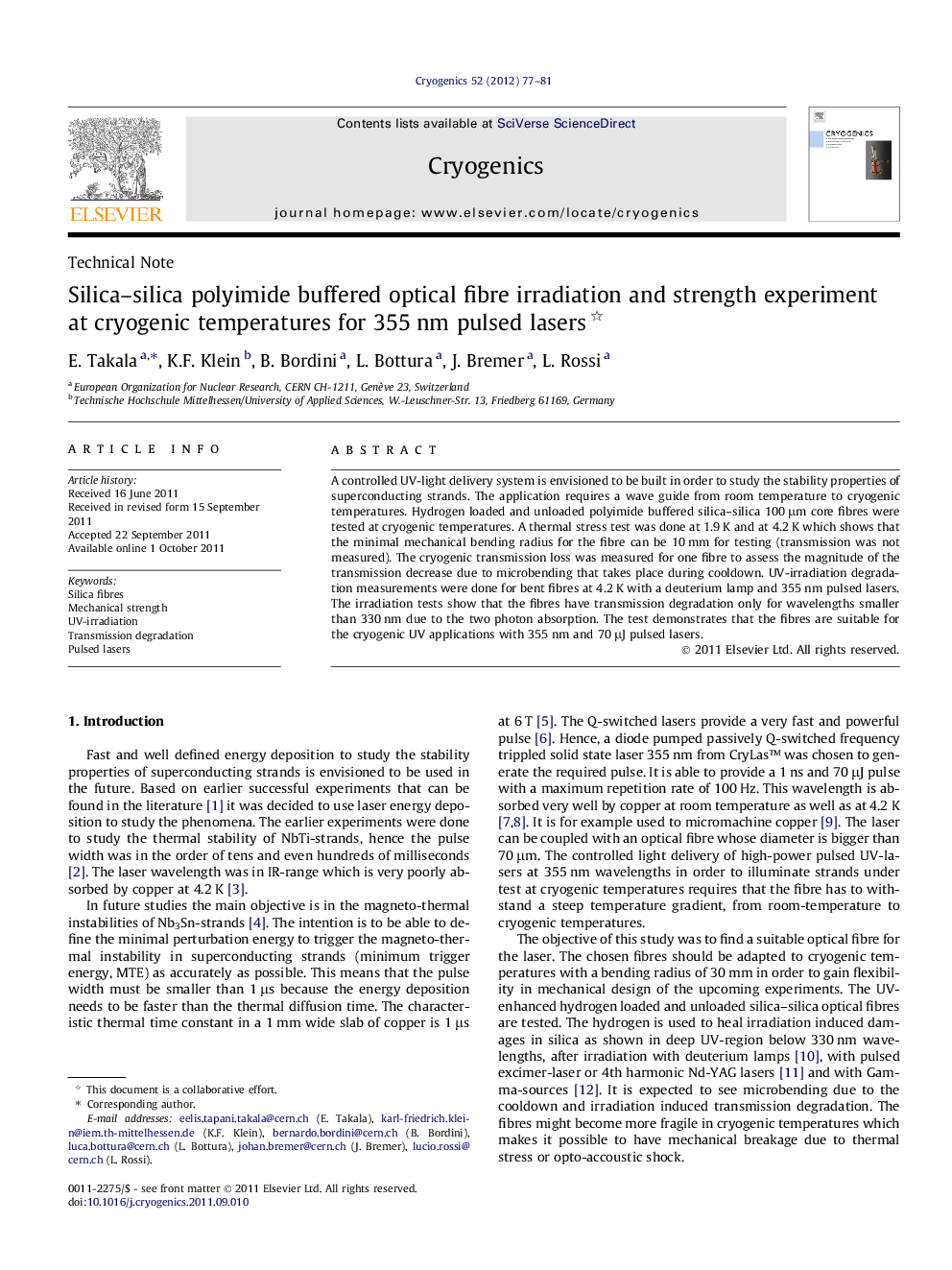| Article ID | Journal | Published Year | Pages | File Type |
|---|---|---|---|---|
| 1507771 | Cryogenics | 2012 | 5 Pages |
A controlled UV-light delivery system is envisioned to be built in order to study the stability properties of superconducting strands. The application requires a wave guide from room temperature to cryogenic temperatures. Hydrogen loaded and unloaded polyimide buffered silica–silica 100 μm core fibres were tested at cryogenic temperatures. A thermal stress test was done at 1.9 K and at 4.2 K which shows that the minimal mechanical bending radius for the fibre can be 10 mm for testing (transmission was not measured). The cryogenic transmission loss was measured for one fibre to assess the magnitude of the transmission decrease due to microbending that takes place during cooldown. UV-irradiation degradation measurements were done for bent fibres at 4.2 K with a deuterium lamp and 355 nm pulsed lasers. The irradiation tests show that the fibres have transmission degradation only for wavelengths smaller than 330 nm due to the two photon absorption. The test demonstrates that the fibres are suitable for the cryogenic UV applications with 355 nm and 70 μJ pulsed lasers.
► All-silica fibres for cryogenic applications with 355 nm pulsed lasers. ► Thermal stress test down to 1.9 K; the mechanical strength of the fibres. ► UV-induced damages; healing by hydrogen loading observed at 4.2 K. ► Two photon absorption dominant for wavelengths smaller than 330 nm.
